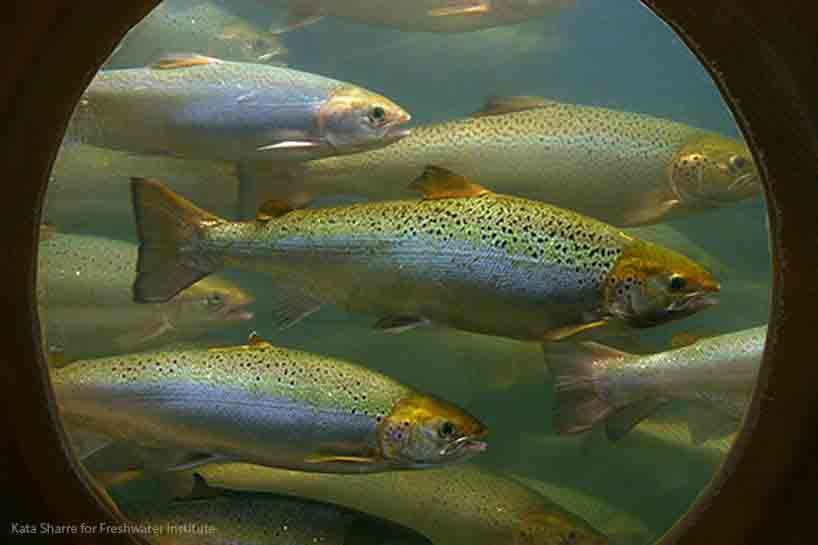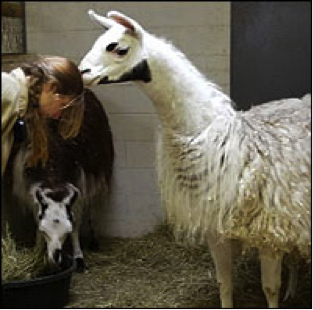Research Questions Salmon's Vitamin D
If you're depending on farmed salmon for your daily vitamin D quota, you might rethink your strategy.
If you’re depending on salmon for your daily vitamin D quota, you might rethink your strategy. Salmon is a healthy food, but it doesn’t contain the bounty of vitamin D many dieticians count on.
New research shows that popular farmed salmon has only a quarter as much vitamin D as wild-caught, and even wild salmon doesn’t have enough vitamin D to meet new suggested medical guidelines.
The USDA has long claimed that 3.5 ounces of salmon contains 400 to 700 units. While it is true that wild-caught salmon can contain up to 900 units, says Boston University professor of medicine Michael Holick, farmed salmon provides only 200 units. Even the common 6-ounce fillet or salmon steak would contain less than 400.
“These [USDA] studies were done many years ago and no one ever questioned them and no one ever thought about the difference between farmed and wild caught,” says Holick, who is now working with the USDA on revising the vitamin D content in their dietary tables.
Adding to Holick’s concern: His research and that of other investigators show that the Recommended Adequate Intake of 200 units is far too low for most children and adults.
Standards for vitamin D have long been outdated says Holick. “Most of the data was generated at a time when they were interested in preventing Rickets in children.” One hundred units of Vitamin D can prevent a child from getting rickets, a bone disease caused by prolonged vitamin D deficiency. Vitamin D was added to milk to prevent rickets; an 8-ounce glass provides 100 units.
“You can’t get [all] your vitamin D by eating salmon, period,” says Holick. “You’d have to eat it everyday, even if you ate wild caught
“In the past, the USDA has listed salmon as an excellent source of vitamin D, which they say contains 600 units per 3.5-ounce serving [on average]. All the epidemiological studies looking at vitamin D use this value for their studies, which means they’re overestimating vitamin D intake as much as two-thirds,” he says.
Holick says he is not targeting the aquaculture industry. His interest is to make the public aware that there is a big difference in the vitamin D content in farmed salmon. This is important since he and other experts estimate that 30-40 percent of children and adults in the US are vitamin D deficient.
Holick, recognized worldwide as an expert on vitamin D, tested 24 farmed and 20 wild-caught salmon provided on multiple occasions by Legal Seafood, a Boston-based restaurant chain. That’s considered a large sample size in the food industry. Holick’s research was presented in mid September to the American Society for Bone and Mineral Research.
The results, he said, didn’t surprise him. “We’ve known that phytoplankton that’s existed in the ocean for 750 million years has been making vitamin D [from sunlight], so, it’s well documented that the vitamin D in [wild] salmon comes from the food chain. Since they’re not eating from the food chain any longer, whatever they’re being fed is likely to be in them.”
Farmed salmon don’t eat fish that had consumed phytoplankton. They eat pellets, to which a small amount of vitamin D was added. The pellets are processed from such things as feathers, fish guts and even gluten, says Holick.
Humans haven’t been around as long as phytoplankton. But we also make vitamin D when exposed to sunlight. About 5-15 minutes of sunlight a day (depending on the season, latitude and time of day), on arms and legs, is enough for a light-skinned person.
People aren’t out in the sun as much as they used to be. African Americans face an additional challenge. “They’re wearing a sunscreen with an SPF of at least eight,” says Holick. This reduces their ability to produce vitamin D in their skin by more than 90 percent.
Sebastian Bell, executive director of the Maine Aquaculture Association, says it’s too early to tell if Holick’s studies reflect “a widely held belief in the human medical community,” but he added, “clearly if there is indeed an issue of concern ... we as [salmon] farmers have a responsibility to try and address those concerns. The wonderful thing about farmed salmon compared to any wild fish, is that we have the ability to influence what it eats and therefore help address any concerns that people have.”
University of Maine food science professor Alfred A. Bushway confirms Holick’s research methods were valid. “I don’t think his values were that much different than what we already knew,” says Bushway, a member of the Institute of Food Technologists.
Salmon still has more vitamin D than other fish, says Bell, and Bushway agrees. “Any salmon is better than no salmon in terms of nutritional value,” says Bushway.
There are additional reasons to eat farmed salmon. “The most obvious benefit to consuming farm-raised salmon is its content of omega 3 fatty acids,” says University of Maine food science professor, Denise I. Skonberg. Omega 3 fatty acids, also in wild salmon, “have been shown to reduce risk of cardiovascular disease and stroke, and are essential in neurodevelopment in infants,” says Skonberg, who has published widely on aquaculture issues.
Salmon also provides high quality protein, low in saturated fats and a rich in potassium, phosphorus, and B vitamins, says Skonberg. Vitamin supplements help, but Holick says their labels are misleading, too. To be precise, he says, vitamin D comes in several forms with varying potency. Fish and milk contain the best form, D3. But the popular Centrum brand of multivitamins contains 400 units of D2, which is only a third as potent. “So you’re getting only the equivalent of about 130 units, not the 400 on the label,” he says.


